BOTTICELLI - TRIAL OF MOSES - PAGE 2
|
Moses and the Law |
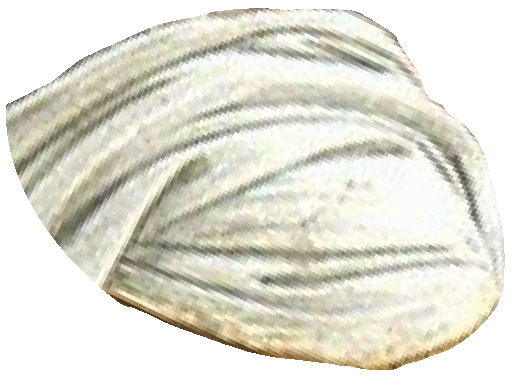
Veiled
|
- The mountain that Moses gave the law
to the children of Israel upon is close to the coastal city
Maqna on the Gulf of Aqaba in Saudi Arabia.
- It's famous for it's
breathtaking views, water springs and the mountain of Tayeb
Ism.
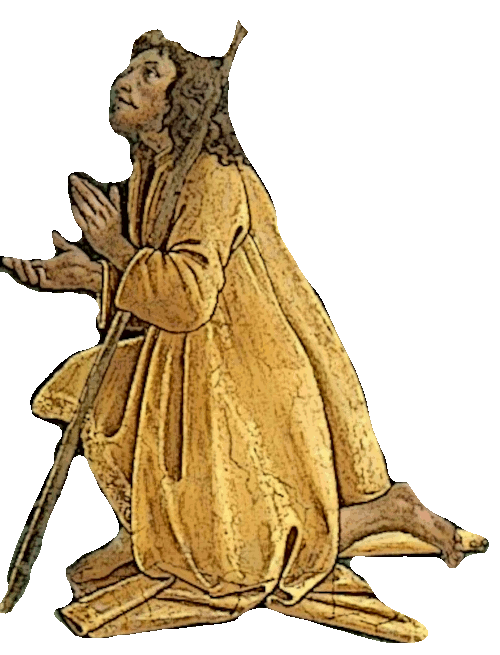
Moses |
- This is the spot where the Israelites crossed the
Red Sea and this is the area where Jethro the Midianite lived.
- Jethro had some sheep and Moses, his son-in-law,
was in charge of herding
them.
- In the Bible, Jethro is Moses' father-in-law, and Moses is depicted as a shepherd.
|
Now Moses was tending the flock of Jethro his father-in-law, the priest of Midian, and he led the flock to the far side of the wilderness and came to Horeb, the mountain of God.
(Exodus 3:1)
|
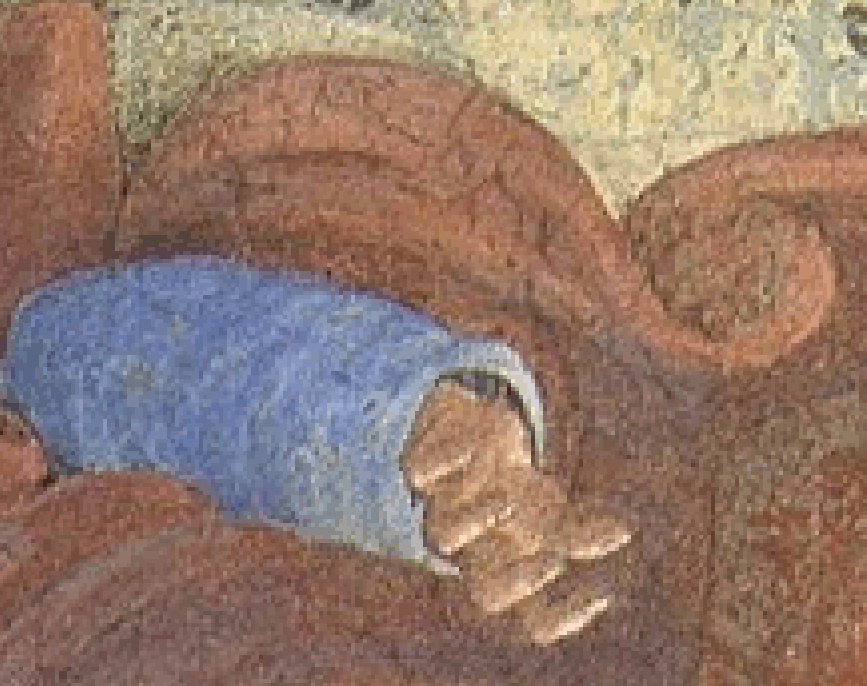
Rock toss |
- Jethro is also identified as a priest of Midian and this
is where Ishmael and Esau were from and they were a mountain people
but no one knows where Mount Seir is located.
- Ishmael
was the firstborn son of Abraham and his concubine Hagar who
he cast out after his wife Sarah gave birth to Isaac, their
only child.
- Esau was Jacob's twin and was the firstborn,
his blind father Isaac was tricked by Jacob into giving the
birthright to Jacob.
- Many claim that Esau willingly gave
his birthright to Jacob but is that even possible, he will
always be firstborn.
|
Mount Seir is a mountainous region mentioned in the Bible, primarily associated with the land of Edom, south of the Dead Sea and extending into what is now Jordan. It is described as a mountainous area inhabited by the Horites initially, then by the Edomites, descendants of Esau. The Bible also contains prophecies against Mount Seir, indicating its desolation and the judgment of its inhabitants, the Edomites.
(Assistant)
|
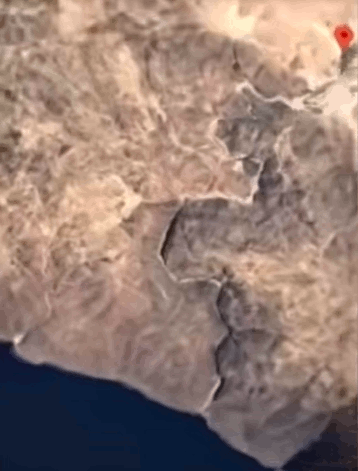
Path from Dahab to the Red Sea |
- It
appears that Maqna on the Gulf of Aqaba is located in the same
area where the Israelites crossed the Red Sea with Moses.
- The Gulf of Aqaba in Saudi Arabia, faces the Sinai Peninsula in Egypt, where
a small town named Dahab is located.
- Egypt is to the west and Saudi Arabia to the east of the
gulf.
- You can follow the Israelites route on a map down to Dahab where
a winding path leads to the Red Sea.
- In Arabic, the word 'dahab' directly translates to gold, highlighting its association with wealth, value, and preciousness.
|
Some interpretations suggest that Esau's choice of an Ishmaelite wife might symbolize a rejection of his father's and brother's (Jacob's) ways, and a turning towards a more worldly path. This is further emphasized by the later tensions and conflicts between the descendants of Jacob and Ishmael, who are seen as representing different spiritual paths.
(Assistant)
|
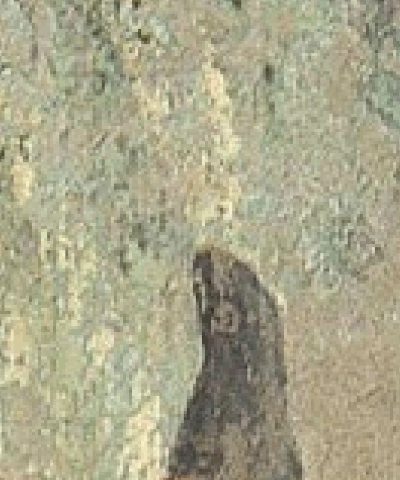
Mountain passageway |
- At the coastline, there is a narrow passageway through
the mountain that you must climb through to get to the sea.
- It's a steep mountain range and in order to move about 2
million people through, you need a passage.
- There are
many palm trees along the way and the first place you get to
is called Marah where the water was bitter.
- Why would that
be? Because if you dig a well too close to a salty sea, your
water will be bitter.
|
Then Moses led the people of Israel away from the Red Sea, and they moved out into the desert of Shur. They traveled in this desert for three days without finding any water. When they came to the oasis of Marah, the water was too bitter to drink. So they called the place Marah (which means “bitter”).
(Exodus 15:22-23)
|
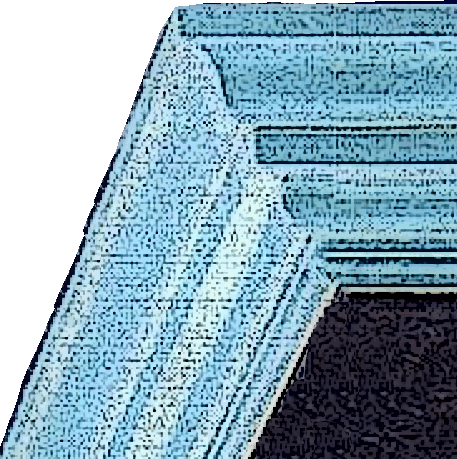
Clear water |
- They would have to travel to a higher elevation and find
a clear, sweet spring.
- But as you climb higher, you
discover there's a road and it's a secret passage and it's the
only way through.
- You can follow the road all the way
up on Google maps and when they got to the other side
what did they see?
- They entered into a little valley that has
always been known for 70 palm trees and the 12 good, sweet
springs of water.
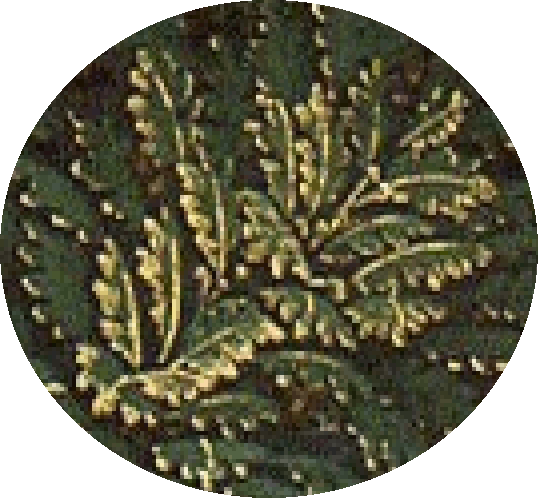
Date palm |
- As they climbed higher, you can just imagine the
Israelites when they reached this oasis near Tayeb Ism where
there are sweet springs and date palms.
- In order to get
across this mountain range you have to follow the river bed
and it's really quite easy to walk along.
- The ground is
fairly even and there are plenty of springs on the way.
-
You can follow the path all the way up the riverbed and you
arrive right at Mount Sinai at a place called Jabal Allah (Jabal Al-Lawz)
in Arabic.
|
They had journeyed from Rephidim, entered the wilderness of Sinai, and camped in the wilderness; Israel camped there in front of the mountain.
(Exodus 19:2)
|
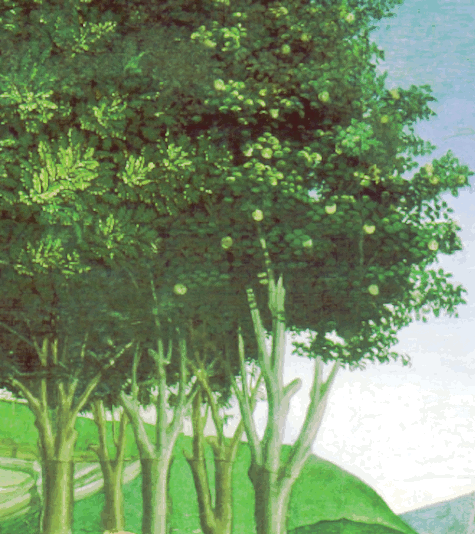
Jabal Allah |
- Jabal Allah is another name for Mount Sinai, specifically referring to the mountain's significance in Islam as the location where Moses received divine revelation.
- It is also known as Jabal Musa, Mountain of Moses, in Arabic and is located in the Sinai Peninsula, Egypt.
- Mount Sinai is also called Mount Horeb and this is how
it is named in the Bible and is also called the Mountain of
Elohim and the Mountain of YHWH.
- This is where Moses set up an altar at the foot of the
mountain and it is marked on the map still today.
|
Moses built an altar and called it The Lord is my Banner.
(Exodus 17:15)
|
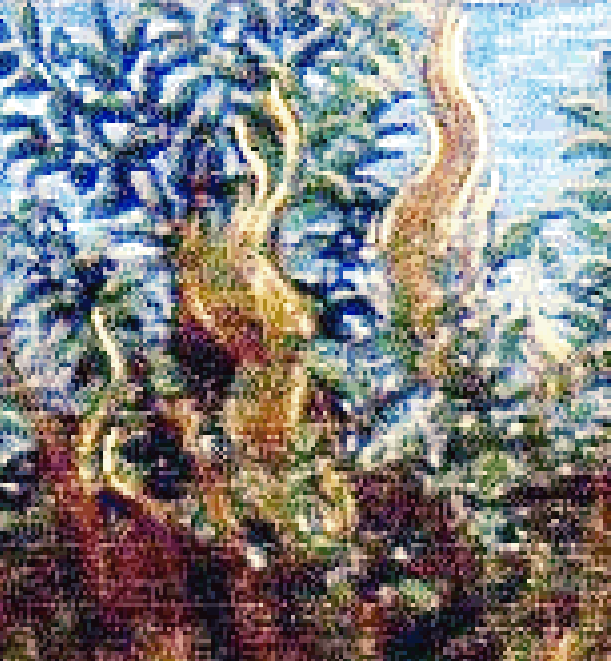
Burning bush |
- One day, while Moses was caring for Jethro's sheep, he led
the sheep
to the wilderness of Horeb, where he encountered the burning
bush and received his divine commission to return to Egypt.
- After receiving the Ten Commandments and other laws, Moses built an altar at the foot of Mount Sinai.
- He also erected twelve pillars representing the twelve tribes of Israel.
|
In other biblical passages, these events are described as having transpired at Mount Sinai. Although most scholars consider Sinai and Horeb to have been different names for the same place, there is a minority body of opinion that they may have been different locations.
(Wikipedia)
|
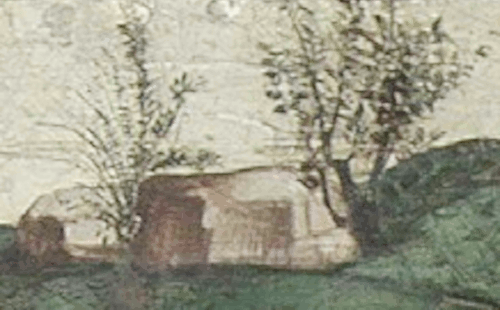
Altar |
- According to Exodus, Moses set up an altar
after writing down God's laws in the Book of the Covenant.
- This altar was central to the covenant between God and the Israelites.
- The altar was for burnt sacrifices and peace offerings of
sheep and cattle and was built without steps and without cut
or chiseled stone.
- Blood from sacrifices was sprinkled on the altar and the people, symbolizing the binding nature of the covenant.
|
Moses then took the blood, sprinkled it on the people and said, “This is the blood of the covenant that the LORD has made with you in accordance with all these words.”
(Exodus 24:8)
|
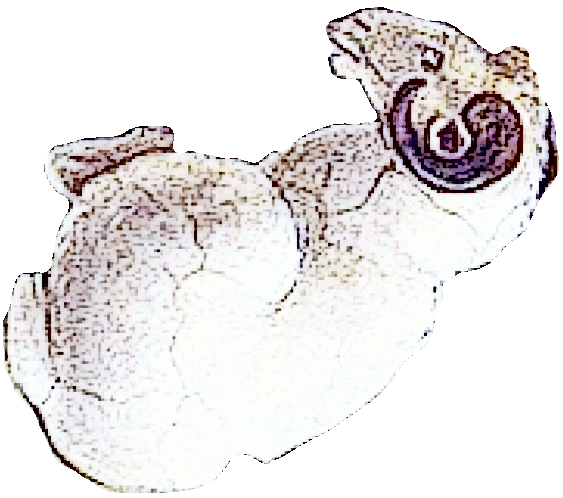
Sacrifice |
- After Moses ordered the sacrifices to begin at the altar, he
took half of the blood and threw it against the altar and the
other half was placed into bowls.
- Moses then read the Book of the Covenant,
which was God's laws and regulations, to the Israelite people.
- He stood higher than them when he spoke and after he was
done the people agreed to the covenant with God.
- Moses
took the bowls of blood and 'threw it over the people,'
presumably referring to the 12 pillars representing the 12
tribes.
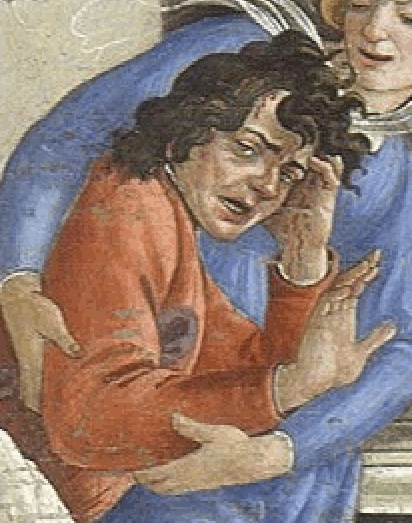
Sprinkled with wrath |
- These are the bowls of wrath spoken about in the Book of
Revelation because if you're under the law of Moses, you
get the wrath and he sprinkled all of them.
- Some have
explored the area and have found evidence of the altar and
features that fit the biblical requirements for a sacrificial
altar.
- They found L-shaped structures (shutes) which would be used
to line the animals up and also suggestion of burnt offerings.
- On one end of the altar is a pit with ash layers and this is
likely where the animal sacrifices took place.
|
Now if you make an altar of stones for Me, you must not build it with cut stones; for if you use a chisel on it, you will defile it."
(Exodus 20:25)
|
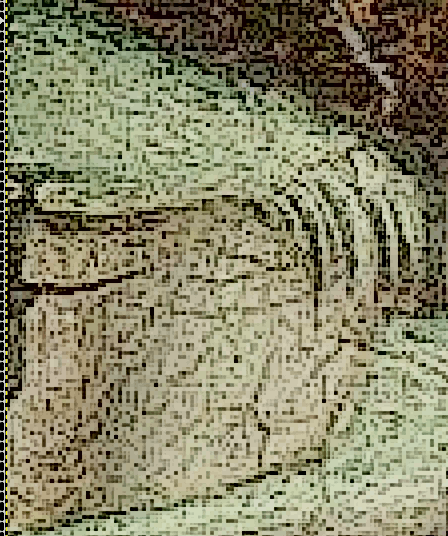
Unhewn stone |
- The Saudi government researchers who wanted to debunk the
story of Moses, had to concede that ash, charcoal, animal
waste and bones were excavated at the site at a depth of 3-4'.
-
Additionally, the Bible perfectly describes the area as Jabal
Maqla where a brook, or stream, came down from the mountain
and there is a stream right next to the excavated altar site.
- The stream was so close by it would easily allow the priests
to wash up and dispose of waste.
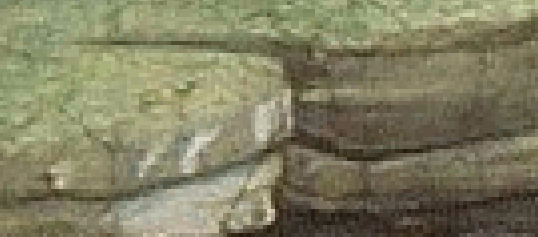
Pillar base |
- There are the remains of 12 pillars or some kind of monument
and there are also purposely created circular stones thay may be
the pillars described in Exodus, or the foundation stones for
these pillars.
- Some who have visited claim the stones
resemble the arrangement of 12 circular stones in the ancient
Israelite High Priest's breastplates with 3 rows of 4 stones.
- Approximately 10 of these pillar stones remain today and
they appear to be from a small marble quarry higher up on the
mountain.
|
Moses then wrote down everything the Lord had said.
He got up early the next morning and built an altar at the foot of the mountain and set up twelve stone pillars representing the twelve tribes of Israel.
(Exodus 12:24)
|
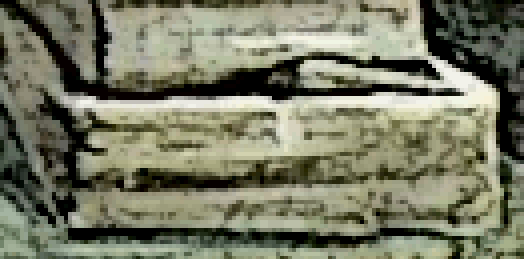
Rectamgiar pieces |
- Each of the stones measure 23" in diameter and
are from 8-26" tall and some theorize that the height of each
pillar may have represented each Israelite tribe.
- The
pillars appear to sit in a square-shaped platform with
rectangular pieces about 18" in diameter and were inside a 20'
square foundation.
- Some local Saudi's believe that they
are not pillars, but the remnants of monument that recited a
tradition and Solomon had a structure erected at the location,
however, the language is so bad there is very little
correlation among the locals.
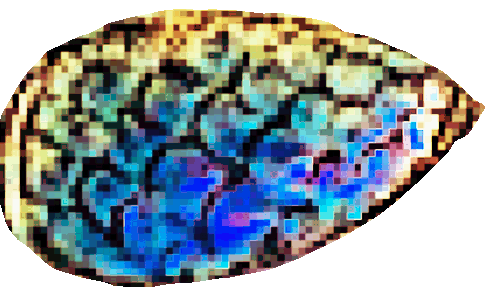
Bright blue mosaic |
-
After Moses sprinkled the blood, the elders were standing on a
pavement that looked like lapis lazuli, as bright blue as the
sky.
- The LORD then told Moses, 'Come up to me on the
mountain and stay here, and I will give you tablets of stone
with the law and commandments I have written for their
instruction.'
|
Moses and Aaron, Nadab and Abihu, and the seventy
elders of Israel went up and saw the God of Israel. Under his feet was something like a pavement made of lapis lazuli, as bright blue as the sky.
(Exodus 24:9-10)
|
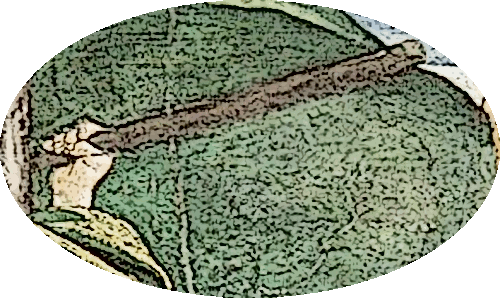
Access forbidden |
-
The Saudi government has prohibited visitation to the possible
altar and pillars nor have they explained why.
- Access to
the site is forbidden and there is a police station in front
of the area and regular patrols that are known to turn away
anyone who approaches.
- Perhaps because no one is supposed
to know any of this ancient history.
- Many who have
examined the site are convinced this is Moses' altar.
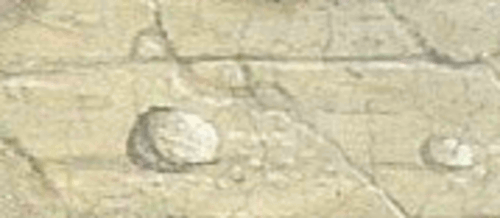
Al-Bad |
-
Mount Sinai was very sacred to the Midianites into Ishmael
because this is where Al-Bad is located.
-
Al-Bad is widely considered to be the location of ancient Midian, and the Ishmaelites are believed to have lived nearby.
- This is where historically, Jethro and the Midianites
resided and they would have set up their altar in the highest
mountain.
- Moses married Jethro's daughter, Zipporah, and
thereby married into the priesthood lineage.
- From this
they created an appendage called the Levitical priesthood
named after Moses brother, Aaron.
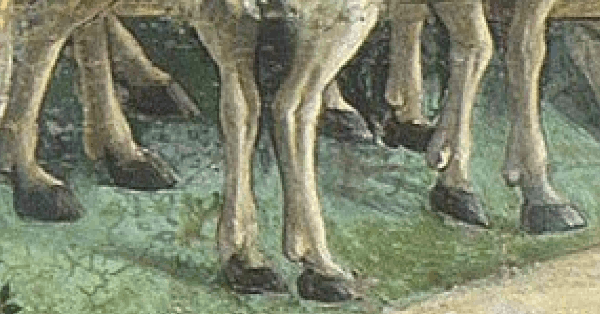
On the path |
- If you zoom in on maps to the area, there's several peaks
and no one seems to be sure which one is Sinai.
- Whether
it's Jabal or another it's pretty clear when you are standing
on the highest of the peaks, there is a clear path right down
the path to the Red Sea.
- They came straight up the
mountain and followed this route and when you follow the
riverbed to the backside of the mountain you arrive at the
location of the altar.
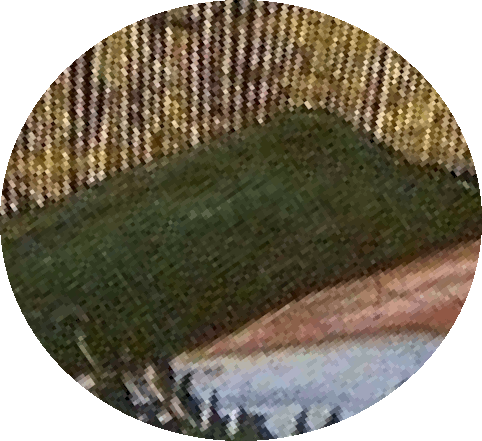
Black mountain |
- The tops of the mountains are all black and they claim this
is due to volcanic eruptions and this whole area was an
ancient volcano.
- It does say in the Bible that the
mountain was on fire, perhaps it was some natural disaster.
-
Some have also noticed at places like Fukushima there is a lot
of UFO unidentified activity when you have these volcanoes.
- This could also explain why the altar was said to be on a
pavement of blue sapphire or lapis lazuli.
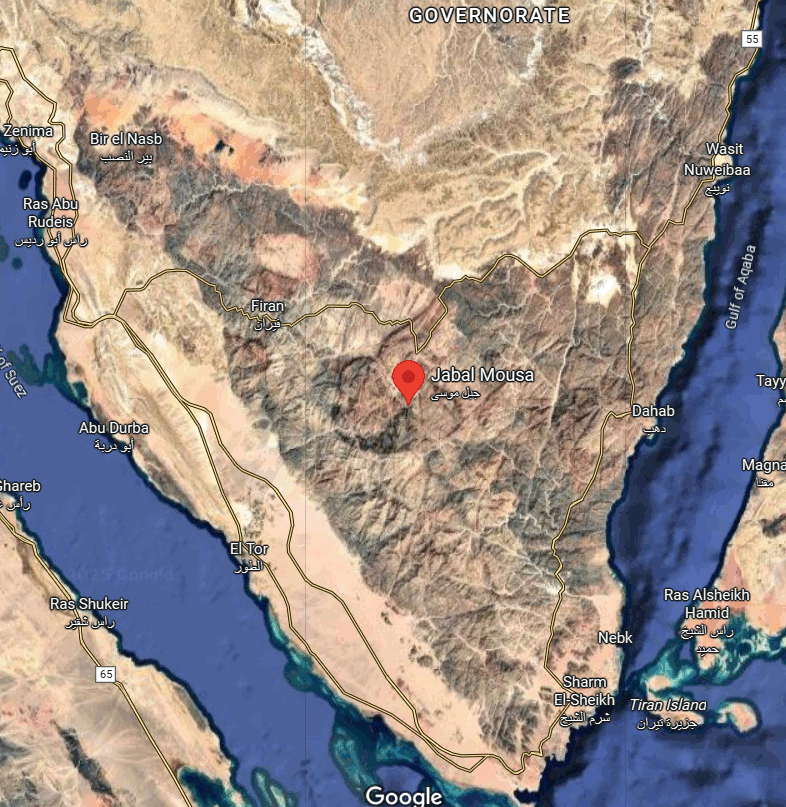
Jabal donkey or snake? |
- The
scenery almost looks like what the Bible describes as the
balsalt, the pavement work, mountain rock and granite.
- In
fact, the gentle slope of the mountain looks like a giant
auditorium and you can visualize Moses standing there among
the crowds as they
were sacrificing animals at his altar.
- But truthfully,
the entire area looks like the physical parting of the sea.
|
For ye have not come unto the mount which might be touched and that burned with fire, nor unto blackness and darkness and tempest.
(Hebrews 12:18)
|
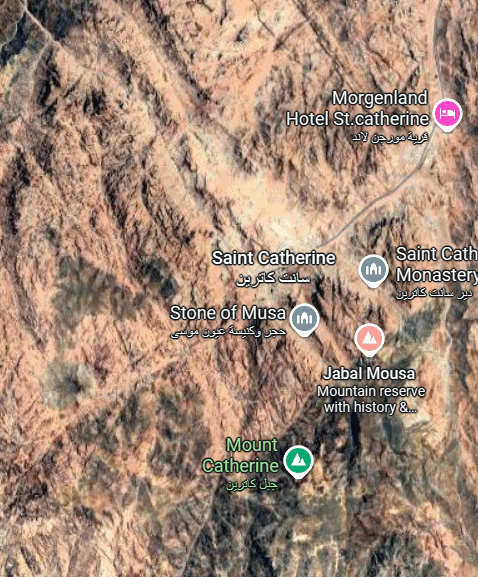
X marks the spot |
-
Saint Catherine's monastery is located on the same road.
-
Isn't it amazing that the ground features on the map are
shaped like a giant X.
- BTW, there's an outhouse on the
very top of Mount Sinai higher up than anything else!
-
It's for both genders of course at least that's what the
sign indicates.
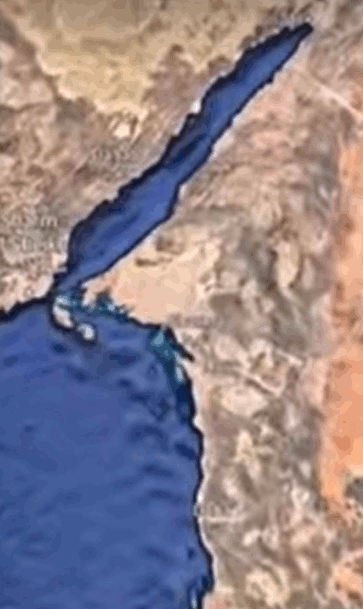
Ant-enna of the sea |
- To the right of the donkey head, Moses crossed the Red Sea, but at a point that is much
narrower than the main body of water.
- Which means Midian
lived in the area south of here and as they were following
along with Moses it took them many years.
- In fact, it took them 40
years to find their way through the wilderness and when they
traveled north they met Esau up by Jordan.
- Esau was to
the north, and Midian was to the south and the area where they
crossed the sea to the east is the area of Ishmael.
|
Midian, in the Bible, refers to both a son of Abraham and a land/nation descended from him. It's primarily known for its interactions with the Israelites, particularly during the time of Moses and the Exodus, and later during the period of the Judges. The Midianites were a nomadic people, and their territory is generally understood to be located in northwest Arabia, east of the Gulf of Aqaba.
(Assistant)
|
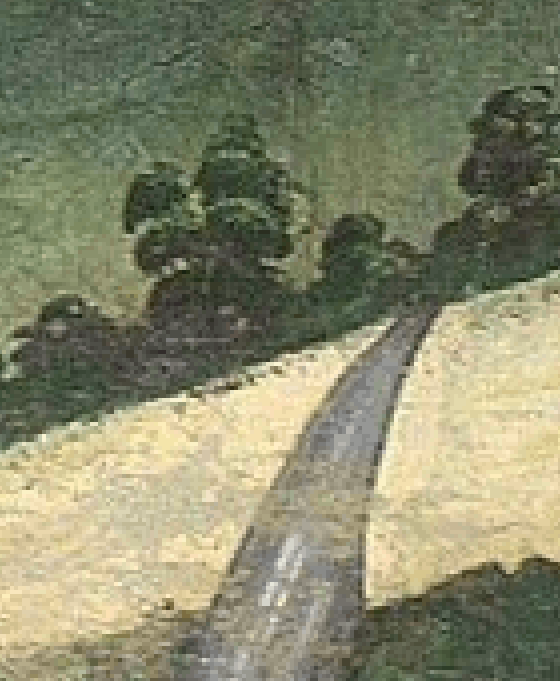
Roadway |
- Abraham, Isaac, Jacob and Joseph were all pharaohs,
Imhotep, Ramses (Moses) were all from the Northern Egyptian kingdom
where they resided for
over 500 years in the land of Goshen.
- When Moses led
them out of Egypt, they traveled round and round (360 degrees) for 40
years (360x40=14,400), they went out from Egypt at Cairo in
the center at Heliopolis.
It is he who sits above the circle of the earth, and its inhabitants are like grasshoppers; who stretches out the heavens like a curtain, and spreads them like a tent to dwell in. (Isaiah 40:22)
|
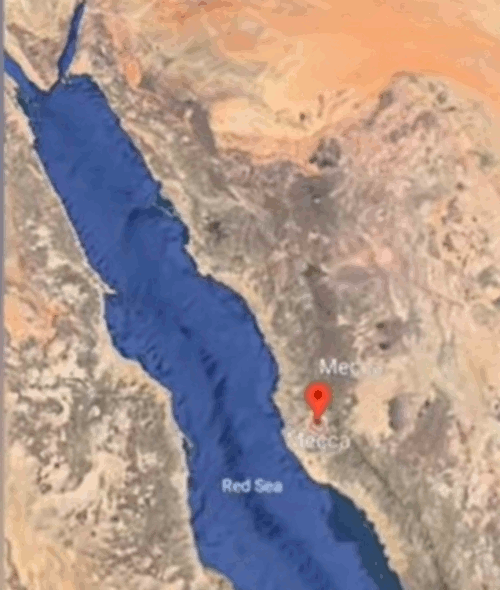
Mecca holy site of Islam |
-
To the south, is the area called Mecca, which is a holy site
in Islam today.
- And this shows that Esau, Midian and
Ishmael all had the same territory and they all went to a
different corner of it.
- It's in Arabia and that is why
apostle Paul called it the 'desert of Arabia.'
-
Islam believes in Moses and his law.
- They have all the
stories, and it is the history of Ishmael as well.
|
The Arabian Desert features prominently in the Bible, particularly as a backdrop for significant events and a symbol of spiritual realities. It's mentioned in relation to the Israelites' journey after the Exodus, the experiences of figures like Ishmael and David, and prophecies about various Arabian tribes.
(Assistant)
|
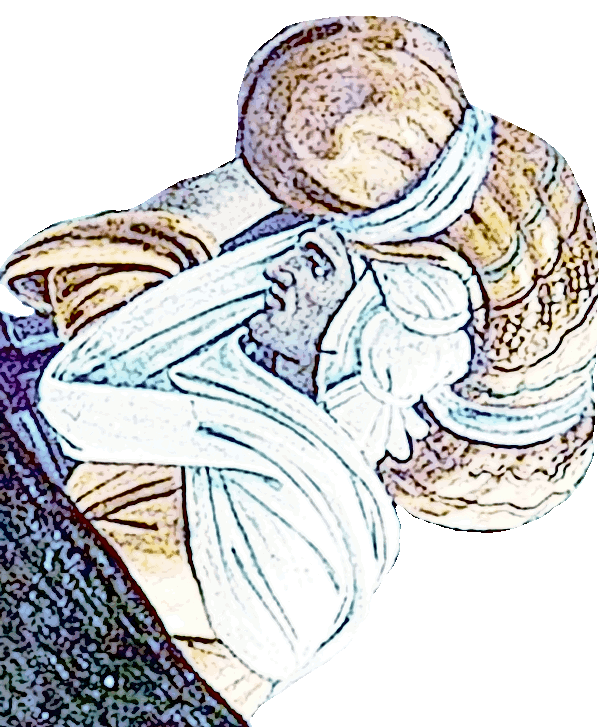
Burden |
- Ishmael, like Jacob, also had 12 sons so there's a play on
words all through the Bible about Judah and Joseph, the two
sons of Jacob getting two different blessings and the greater
blessing.
- Judah received a blessing that is temporary,
until the one who has legal right (Jesus) comes.
- So we
have things like Jacob had two wives, Leah (YHWH covenant) and
Rachel (El new covenant) the better deal.
- The slavewoman
under YHWHs law and the freewoman with Jesus' New Covenant.
|
The burden upon Arabia. In the forest in Arabia shall ye lodge, O ye travelling companies of Dedanim.
(Isaiah 21:13)
|
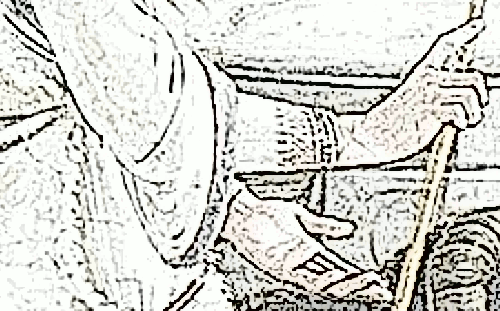
New Covenant |
- It was El Elyon that met Abraham with the bread and wine
which are the emblems of the New Testament, the new covenant.
|
The New Testament utilizes various symbols, with some of the most prominent including the lamb, bread and wine, and the dove. These symbols represent key aspects of Jesus's life, teachings, and the Christian faith, such as sacrifice, grace, and the Holy Spirit. Additionally, the four Gospels are each associated with a specific symbolic creature: a man for Matthew, a lion for Mark, an ox for Luke, and an eagle for John.
(Assistant)
|
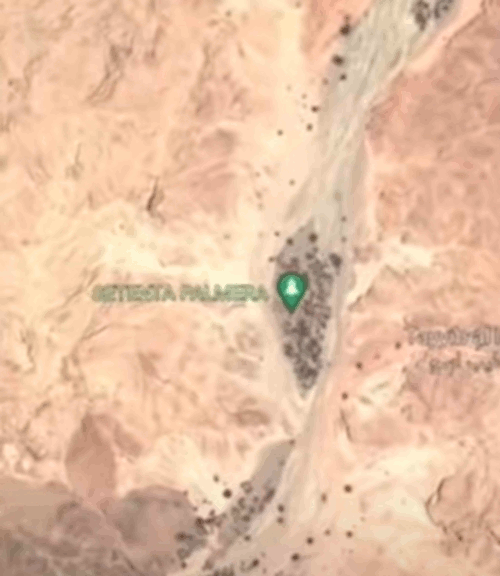
Tayyib al Ism |
-
When Moses crossed the Red Sea
at the Gulf of Aqaba from west to east, he arrived at this particular passageway
through the mountain which winds north to a
place called Tayyib al Ism (Tayeb Ism) which they all claim is
Elim.
- Tayyib al Ism is a valley in Saudi Arabia believed by some to be the biblical Elim, a place of rest and refreshment for the Israelites after their journey from Marah.
|
Some researchers and locals believe this wadi is the location of Elim, the oasis described in the Book of Exodus as the Israelites' second stop after the Red Sea crossing, where they found 12 wells and 70 palm trees.
(Assistant)
|
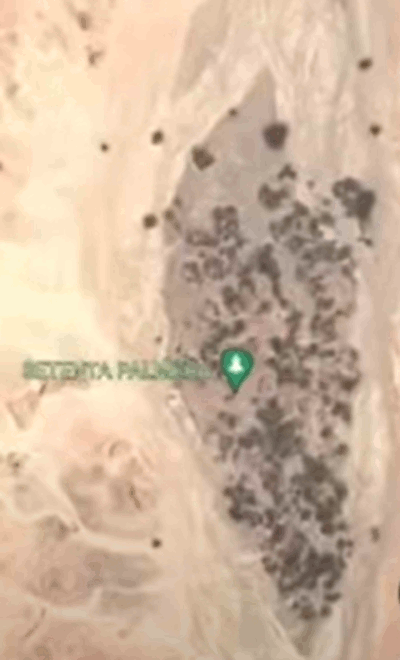
Moses Elim |
-
This is where Moses went and it's characterized by a narrow canyon with a stream, palm trees, and 12 wells, aligning with the biblical description of Elim.
- The water was sweet and these were date palms which are
still there today, no doubt ancestors of the biblical trees.
-
It has been known for thousands of
years that this is where Moses brought the children of Israel
and they stayed and drank the waters at Marah (Elim).

Jethro's daughters at the well |
-
But Elim has the word 'El' in it and that's where they got the
sweet water, because that's the new covenant.
- Moses
encounters seven daughters of a priest of Midian who are
drawing water for their flock when shepherds try to drive them
away.
- They were Jethro's (Reuel's) daughters and Moses
married Zipporah who is shown on the left.
- This is always
the same story, Jesus met the woman at the well, the well with
the spiritual water, and the priesthood is over that and the
woman is a covenant.
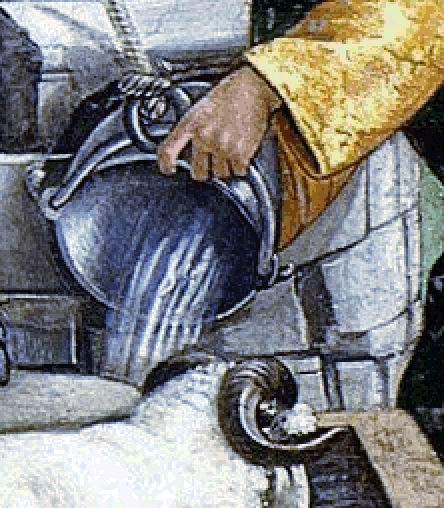
Waters of Marah |
- Moses intervenes and helps the women draw water for their
sheep.
- This was at Elim and was called the waters of
Marah and they were bitter.
- Moses married Jethro's
daughter, just like Jacob's son Joseph married the daughter of
On from Heliopolis, or Anu, a Sumerian deity, who was Ra to
the Egyptians.
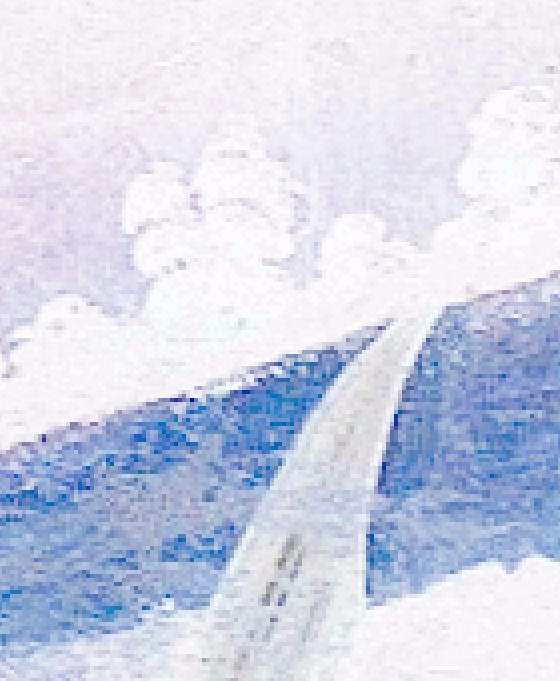
Living water |
- Jesus brought eternal living water to the woman at the
well.
- This is the great truth that Jesus brings the true
water whereas earlier they had been at the waters of Marah,
after YHWH.
- It was named after YHWH because it was the
first covenant and they came to the waters of Marah (Yah) and it was
bitter.
- Marah is also very similar to Mount Moriah which is the name given to a region in Genesis, where the binding of Isaac by Abraham is said to have taken place.
- Known today as Temple Mount where Solomon's Temple is
said to have been built.
|
When a Samaritan woman came to draw water, Jesus said to her, “Will you give me a drink?” The Samaritan woman said to him, “You are a Jew and I am a Samaritan woman. How can you ask me for a drink?” Jesus answered her, “If you knew the gift of God and who it is that asks you for a drink, you would have asked him and he would have given you living water.”
(John 4:7-10)
|
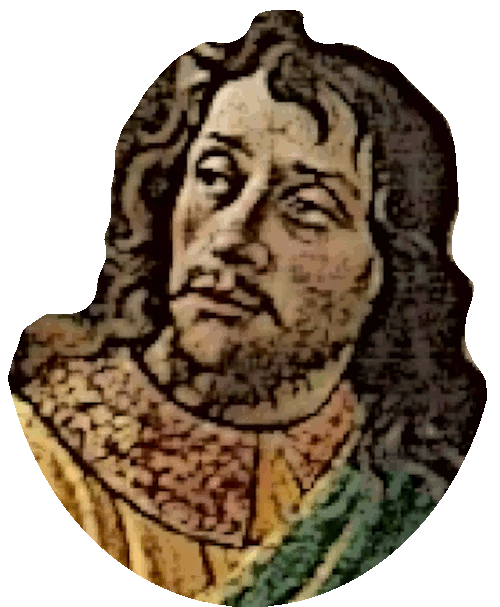
Moses finds water |
- Elim is where the Israelites spent quite a bit of time
because they had plenty of water and food.
- There's even rock there that
was split in half and water flowed out and this is at the base
of Mount Sinai also known as Horeb.
-
The story of the split rock at Horeb was about the Israelites
who were wandering in the desert and they were thirsty so they complained to Moses about the lack of water.
- God instructed Moses to strike a rock at Horeb, and when he did, water gushed out, providing enough water for the people and their livestock.
|
And Moses cried unto the LORD, saying, What shall I do unto this people? they be almost ready to stone me. And the LORD said unto Moses, Go on before the people, and take with thee of the elders of Israel; and thy rod, wherewith thou smotest the river, take in thine hand, and go. Behold, I will stand before thee there upon the rock in Horeb; and thou shalt smite the rock, and there shall come water out of it, that the people may drink. And Moses did so in the sight of the elders of Israel.
(Exodus 17:4-6)
|
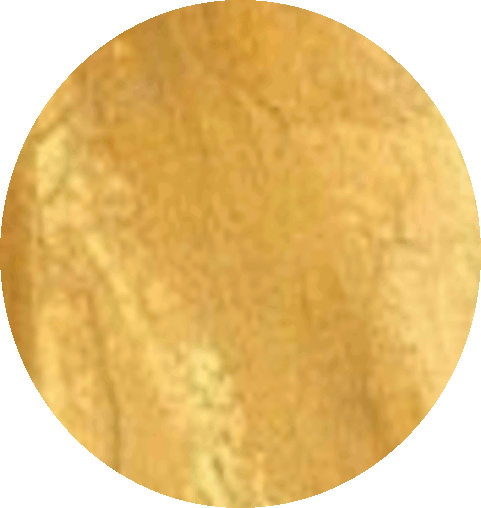
Dry desert day |
-
The evidence shown in the Bible about how the Israelites
stayed at Mount Sinai all seems to be here, including a split
rock, some do dispute though, but is this all the evidence
we're going to get?
- It's not like there's any road signs
and no one seems to take care of anything here, even the dates
were abandoned.
- But there
are so many reasons to believe this is the true location and
one of them is that the area close by known as Al-Bad was
traditionally the home of Jethro.
- This is a well-known
fact still today and Moses met Jethro on the mountain next to
Al-Bad.
|
Hebrews complained about water at Rephidim on day 42 from Goshen but Moses struck the rock for water 5 days later at Mt Horeb on day 47. The split rock at the foot of Mt. Sinai was 25 km Rephidim and served as the main water supply for the 3 million Hebrew during their 11-month, 5 day stay.
(bible.ca)
|
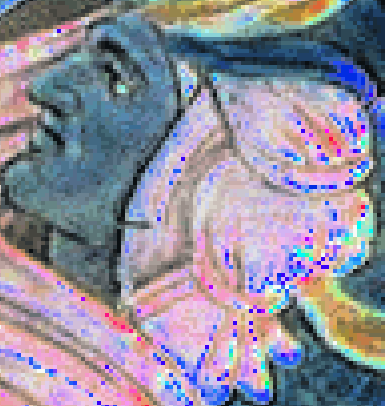
Midianite type |
- Later on they
moved out of this area to a place where the manna comes down
and provides food for them.
- As you're going through the
scriptures, Moses passes by Jethro at Al-Bad, the land of the
Midianites.
- Remember the Bible tells us that Joseph was
sold to the Midianites, and another time, it refers to them as
the Ishmaelites.
- So the Bible distinctly uses the term
Ishmaelite and Midianite to refer to the same people.
-
They pass through Mecca, which is Ishmael, and the 12 tribes
of Israel represents then all of Esau and the Midianites.
|
Manna sometimes or archaically spelled Mahna or Mana, is described in the Bible and the Quran as an edible substance that God bestowed upon the Israelites.
In the description in the Book of Exodus, manna is described as being "a fine, flake-like thing" like the frost on the ground.
(Wikipedia)
|
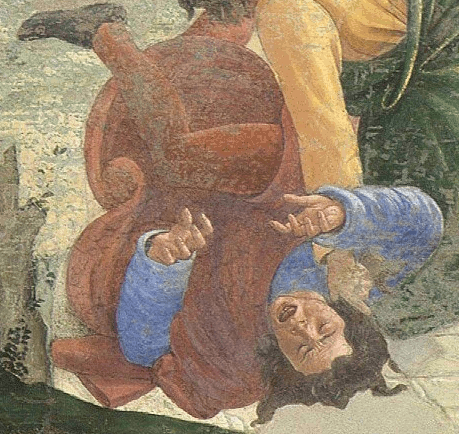
Amalekite in battle |
- They may have had a confederation and as they traveled
further north they confronted the Amalekites.
- The Amalekites were an ancient tribe, described in the Hebrew Bible as fierce enemies of the Israelites
from an area called Amalek.
- They are portrayed as relentless raiders who harassed
the Israelites during their Exodus from Egypt and subsequent
wanderings.
|
The Bible depicts a divine command to eradicate the Amalekites, which has been interpreted both literally and metaphorically. In Jewish tradition, the Amalekites symbolize a persistent force of evil and an archetype of those who oppose God's people.
(Assistant)
|
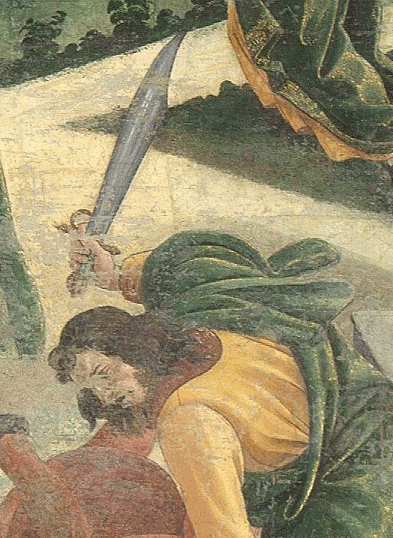
Moses in battle |
- In the Bible, the city of Shechem is mentioned in connection with several key events and figures.
- The most prominent are the stories of Dinah's rape and
the subsequent actions of her brothers, and the rise and fall
of Abimelech, the son of Gideon (Jerubbaal).
- Joshua designates Shechem as one of the cities of refuge, providing a safe haven for those who accidentally kill someone.
|
Abimelech, Gideon's son by a Shechemite woman, uses his connections in Shechem to seize power, becoming king. However, his reign is marked by conflict, ultimately leading to his death and the destruction of the city.
(Assistant)
|
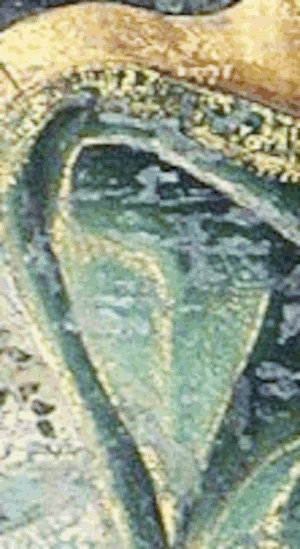
Asenath |
- Most think they are the Canaanites, but these are Esau's
grandson, Amalek, and the children of Shechem and that comes
from Joseph who married Shechem's daughter, Asenath.
- In
the Bible she is called the daughter of Potiphera, who is also
called the priest of On (Heliopolis), and in the Sumerian tablets he was Anu, or the
father of the deities who had a literal descendant on earth so
this was the first birth from a human woman.
- Pharaoh gave her to Joseph as a wife after Joseph became a ruler in Egypt.
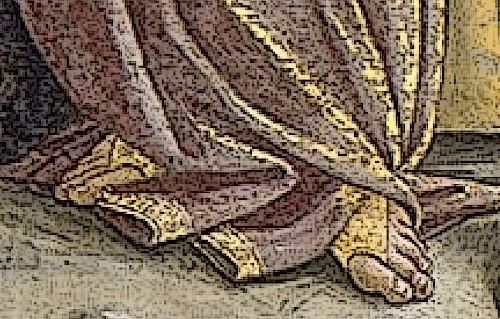
Royal lineage |
- Her name is Asenath and she is also the mother of Joseph's sons, Manasseh and Ephraim.
- This is the royal bloodline that created the prophecy in
the Bible that the scepter will not depart from Judah till he
who comes who has the legal right.
- Remember, Esau sold
his birthright to Jacob, or Jacob basically stole it and there
are all kinds of parables about the birthright going from the
flesh to the spirit.
- The fleshly nature and the
spiritual; Cain and Abel, Jacob and Esau, Leah and Rachel, all
representing either flesh or spirit.
|
The scepter will not depart from Judah, nor the ruler’s staff from between his feet, until he to whom it belongs shall come and the obedience of the nations shall be his.
(Genesis 49:10)
|
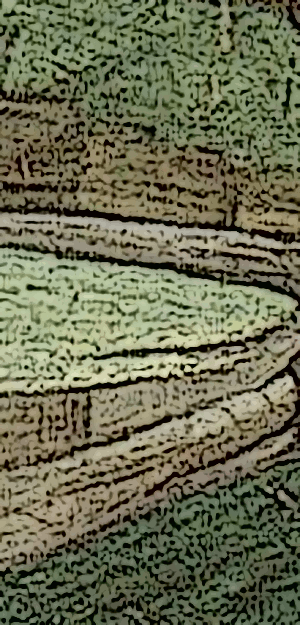
Well at Marah |
-
Then we have the two watering holes, Marah which was bitter,
it represents the Old Covenant.
- They couldn't drink it,
they couldn't have eternal life and so they had to go through
this great struggle going through the pass.
- And they
almost died in the wilderness while attempting it.
- 144,000 people came out at the end but they went around and
around for 40 years, 360 degrees, 144,000.
- When they
crossed the River Jordan they set up the 12 stones and called
it Gilgal which is the wheel.
|
Gilgal is a significant location in the Bible, known as the first place the Israelites camped after crossing the Jordan River into the Promised Land. It was a site of important events, including the renewal of the covenant through circumcision and the celebration of the Passover. It also served as a military base and a place of prophetic activity.
(Assistant)
|
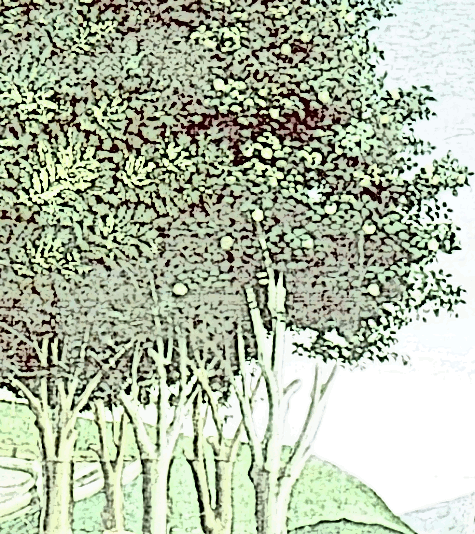
72 Trees |
- In Gilgal, Jesus preached on the circuit of Galilee, and
that word Gal or Gil means 'the wheel' and that's the wheel of
rebirth.
- That is the struggle that we go through until we
get to the 12 springs of water and the 72 trees that gave
eternal life, which is the New Covenant.
- This is why
apostle Paul tells us that the Jerusalem that is now is in
bondage with her children.
- He said it corresponds to a
mountain in Arabia, and we know that is Horeb (Sinai) and
that's where Moses went up on the mountain and gave the law.
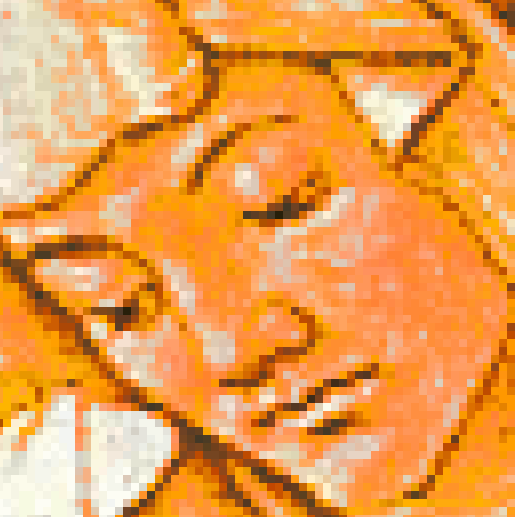
Hagar the slave woman |
- Sarah, unable to conceive, offers Hagar to Abraham, and Hagar becomes pregnant with Ishmael.
- Hagar's pregnancy leads to conflict with Sarah, and Hagar flees into the wilderness.
- Moses gave the law to the Israelites so why does Paul say it
is Hagar?
- Because it is Hagar, Abraham's other 'wife'
that had 12 children, but this is an analogy because Jacob had
12 sons and Hagar's son, Ishmael had 12 sons as well,
but they both hated each other.
|
In the Bible, Hagar is a significant figure, primarily known as the Egyptian maidservant of Sarah, who becomes a surrogate mother to Abraham's son Ishmael.
(Assistant)
|
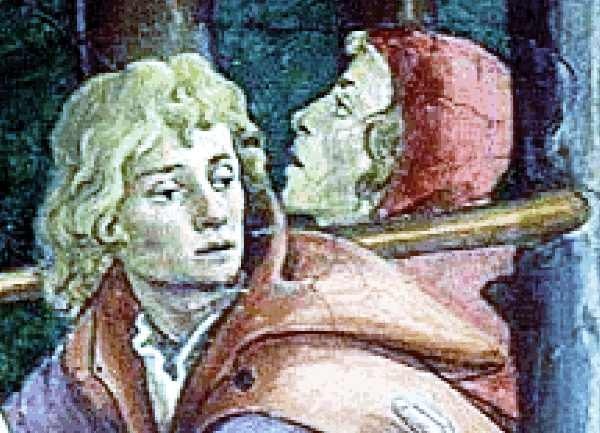
Jacob at war |
- Jacob, who is the 12 tribes, and Ishmael had battles and they did war upon each
other but you see Ishmael is also the 12 tribes and he
represents those who are still under the law, under Mount
Sinai, a mountain in Arabia, this Old Covenant.
- They're
in bondage with their children, but our mother, she's in
heaven and she is free and that's the New Covenant.
- She's
not in bondage because she's not under any law, she's free as
the scripture says.
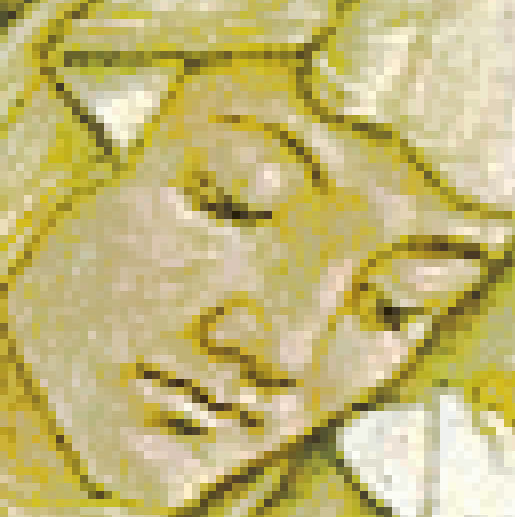
Free woman |
- Jesus said that a slave doesn't know what his master is
doing but that we're not his slaves, we're his friends.
-
He purchased us and when he did that, he set us free.
-
Unlike when every woman had to be obedient to her husband
under YHWHs Old covenant, the price of a girl was her dowry.
- Jesus delivered us and gave us our freedom.
- Just as
Sarah was a freewoman and Abraham said she could do whatever
she wanted because she's not under a law, she's free.
- This
is what we are as Christians, we're not under any law, not so
we can do bad things to hurt people, but because we do good
things to follow the Holy Spirit.
|
I no longer call you servants, because a servant does not know his master’s business. Instead, I have called you friends, for everything that I learned from my Father I have made known to you.
(John 15:15)
|
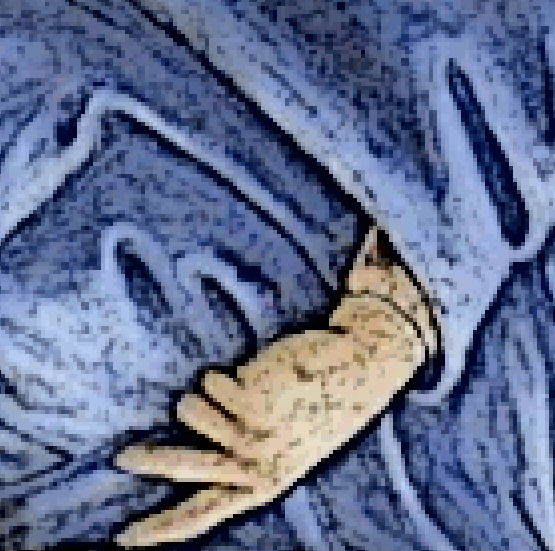
Two strikes |
- It's actually the law that is carnal and not spiritual,
it's constantly telling everybody, an eye for an eye and a
tooth for a tooth.
- This only perpetuates war, violence,
slavery and genocide.
- So apostle Paul said 'ye who want
to be under the law, do you not read the law?'
- It's
slavery, we've been set free from the law of sin and death and
this means eternal life taking in knowledge of you, the divine
being, and the one you sent forth, Jesus Christ.
- And
we're going to have eternal life and as the apostle Peter
tells us we're going to partake of the divine nature.
|
Tell me, you who want to be under the law, do you not understand what the law says? For it is written that Abraham had two sons, one by the slave woman and the other by the free woman. His son by the slave woman was born according to the flesh, but his son by the free woman was born through the promise.
(Galatians 4:21-23)
|
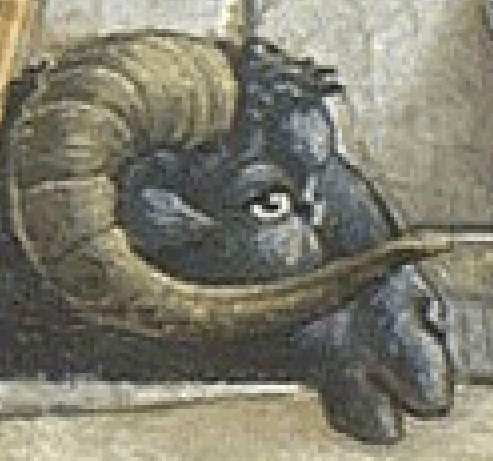 |
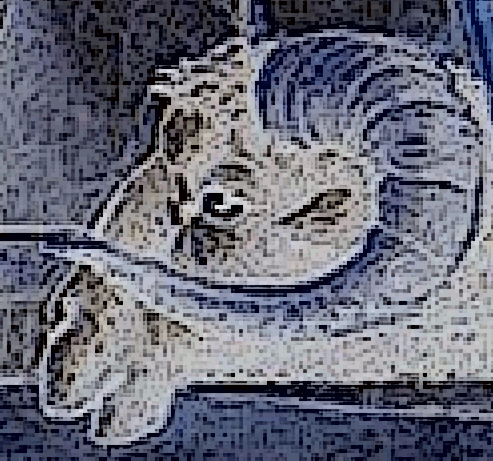 |
|
Coming together |
- We have to understand that everybody's going to be all
right, the flesh is going to be raised up and given eternal
life.
- So the flesh and the spirit are going to be brought
together again and they're going to have harmony.
- The
brothers are going to come together and embrace and they're
going to start getting along because it's destiny.
- That
all of the Lord's children will eventually find peace and the
southern kingdom will be united with the northern kingdom
under one king which is the Christ.
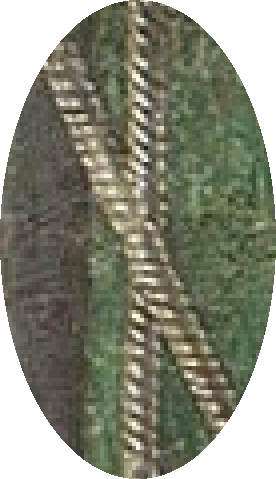
No Canaanites allowed |
- The Amalekites were wiped off the face of the earth
because YHWH hated them, but that doesn't mean they were bad.
- Zechariah says there will be no more Canannite in the land
in the new world after the millennial reign begins.
- But
you see, that's YHWHs belief, the New Testament says just the
opposite.
- They'll be neither Jew nor Greek, nor male or
female.
- We're not going to be slaves anymore and there
won't be anymore crying or tears.
- All things have passed
away and all things have begun new, we have a New Covenant and
we go by love.
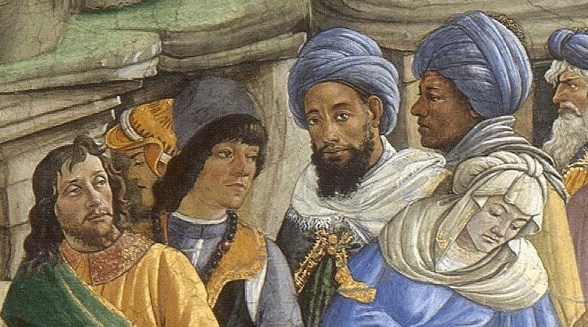
Too many to number |
- The Book of Revelation says there will be a
group of people that will be so large that no man could number
them.
- Like the sands of the seas and the
angels told Abraham it would be like the stars of heaven, so
many you couldn't count them.
- And it said they will be
from every nation, every tongue, every people, every language,
everyone on the face of the earth.
- This is one thing we
know beyond a shadow of a doubt, but sometimes some will argue
that just because Jesus says he's not willing to allow any to
perish, that doesn't mean that some won't, and he's just
saying he doesn't want that to happen to anyone.

Like the sands of the sea |
- Except the Lord really doesn't want to lose anyone, he's
not willing that any should perish.
- If you really think
about it the Bible states, every man, woman, people, nation, tongue, language,
that no man could number, what is this saying?
- Jesus also
said there's coming a time when all in the graves, that's
everyone in the grave, will hear his voice and come out.
-
Some will come out to a resurrection of eternal life and
others are going to be resurrected unto a judgment.
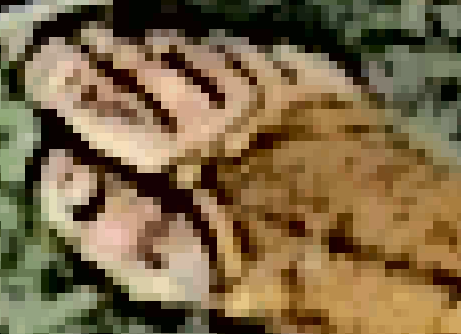
Mortal family |
- What they means is that some won't have eternal life
yet, they'll have to come back and reincarnate and live
another life.
- That's because they're still under the law,
and that's an eye for an eye, they still hold onto the Ten
Commandments and suffer fear, shame and guilt.
- There has to be vengeance
if you knocked out someone's eye, you have to lose your
eye too, so we're living in a world of vengeance and YHWH will
judge any who believe in his laws.
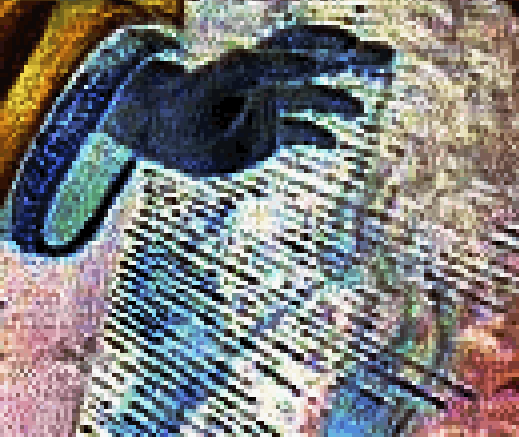
Hades opened up |
- This
means everyone will come out of the grave and the Book of
Revelation says that even Hades will be opened up.
-
There's coming a day when death and hell will be no more and
then it says, death where's they sting, it's all gone, there's
no more death.
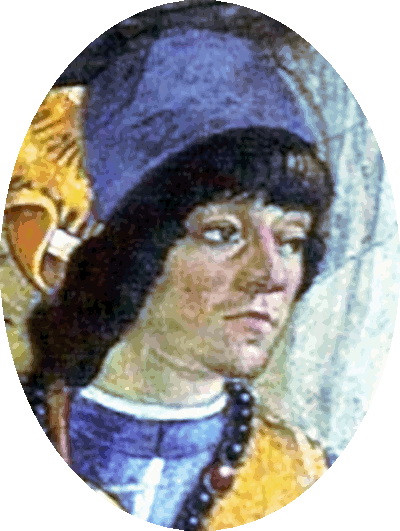
Middle Easterner |
- If you went to the Middle East a couple hundred years
ago you would only find Middle Easterners because there
were no children of Israel there.
- Because they had been
taken into captivity thousands of years before.
- But today
people feel an obligation that the Bible must be fulfilled and
the Israelites are going to come back to their land and
rebuild.
- Why do we care about rebuilding and going back
to these earthly promises, and what are these earthly promises
that YHWH is promising us?
- Well he's not promising us
eternal life, and the New Testament tells us that we can't get
eternal life there is no law made that can give you
righteousness.
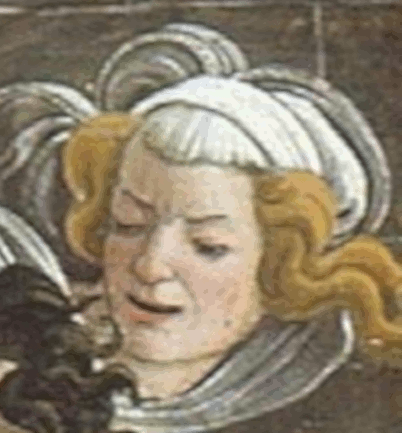
Spiritual thing |
- If you think and believe in law, and you believe in this
material world, then you'll fail and you'll miss the mark.
- It's important that we understand what the kingdom of our
Lord is, it's a spiritual thing, it's run by love, not by law,
we have forgiveness.
- We have hope, kindness and
gentleness, we help one another and heal each other.
- It's
a whole different system, a whole different kingdom, it's the
kingdom of Our Lord.
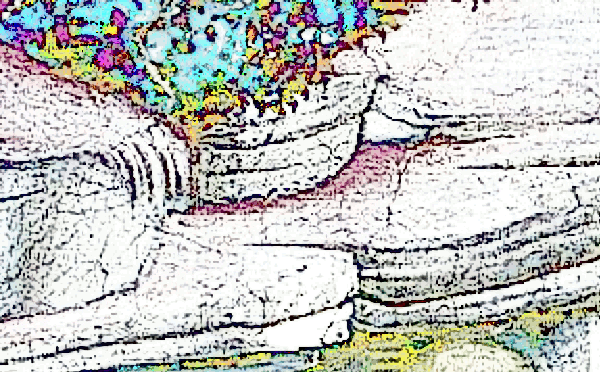
Heavenly |
-
Our Father is in heaven and Jesus said their father was from
beneath and he's a liar and a murderer and he was from the
beginning.
- All this story that's in the Old Testament is
a parable and it was written for us upon whom the ends of the
world have arrived.
- As we read the scripture we
understand why apostle Paul said that the letter of the law
killeth us, but the spirit gives life.
- The esoteric
meaning or the spiritual meaning is what we go by and there
love is taught everywhere, even in the Old Testament.
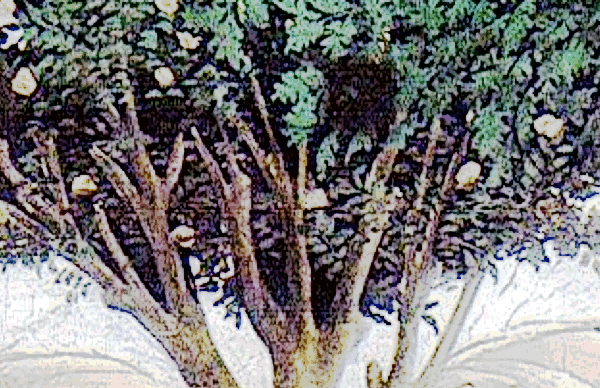
Mount Horeb |
-
Moses went to Mount Sinai and got the laws which is really the
word for the moon god in the Sumerian tablets, Shin, and this
is the land of Shin.
- There's a lot of words that have to
do with Shin, such as Sinai, and the whole area is known as
the wilderness of Shin.
- But there is another mountain
that Moses went up, and Elijah went to Mount Horeb as well.
- They traveled down Mount Horeb which it was to the east of
the Red Sea and somewhere they crossed what the Bible calls
the 'Sea of Reeds.'
- And it was somewhere about here that
the children of Israel rejected the law of love.
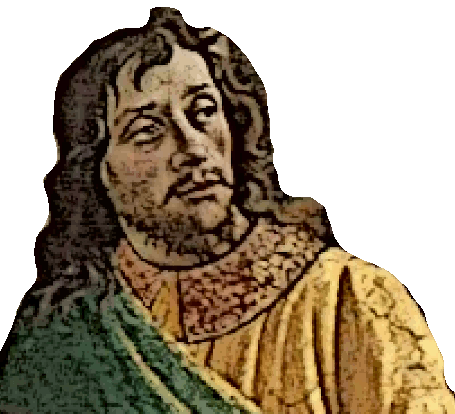
Moses scheming |
- The Most High offered the knowledge to Israel and told
them he would take them to a land of milk and honey, pomegranates,
fruit and dates, but they wanted the meat instead.
- Known as
the carnal death
and murder, and they wanted Moses to speak to them, they didn't want
the Most High speaking to them.
- So Moses covered them
with the veil, the Ten Commandments and Jethro helped him set
up the lower Aaronic priesthood.
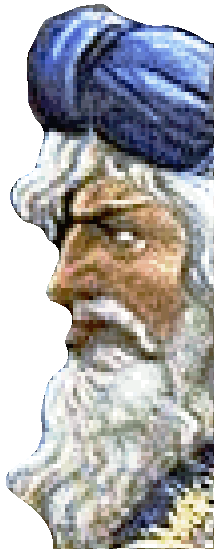
Years passing |
-
It was at this time Moses had to go back up the mountain a
second time, but he was in a different area, Mount Sinai in
the territory of Ishmael.
- With the Midianites and the
prophet Jethro.
- Moses traveled all the way here and had
an encounter with Jethro and created the Levitical priesthood.
- He continued to march on up to the area of Esau and Moses
crossed the Jordan River right into the area around Jericho.
- Mount Sinai and Mount Horeb are thought to be the same place
so this is another play on the flesh and the spirit.
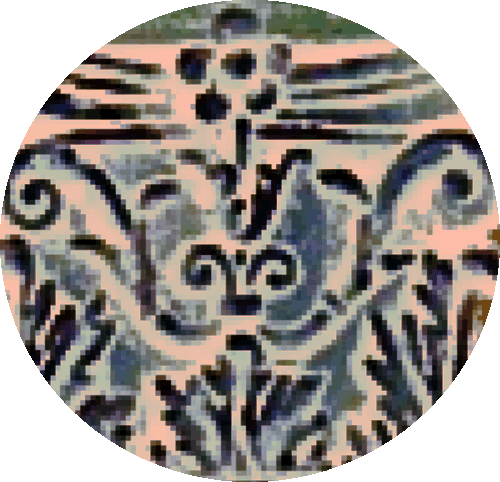
Queen of Israel |
- It was there that Joshua married Rahab the harlot who was
the queen of Jericho and went into the Promised Land with her,
she became the queen of Israel.
- They crossed the Red Sea
and went to Sinai, went up to the wilderness and traveled for 40
years to the north and crossed the Jordan at Jericho.
-
The first place they came to was Gilgal and they made 12
stones and Joshua crossed the river there and began to conquer
and they entered into this land.
|
The Sea of Reeds is a Hebrew term and refers to the
irrevocable giving over of persons to the LORD, often
by totally destroying them.
(From Joshua 2:10)
|
|

